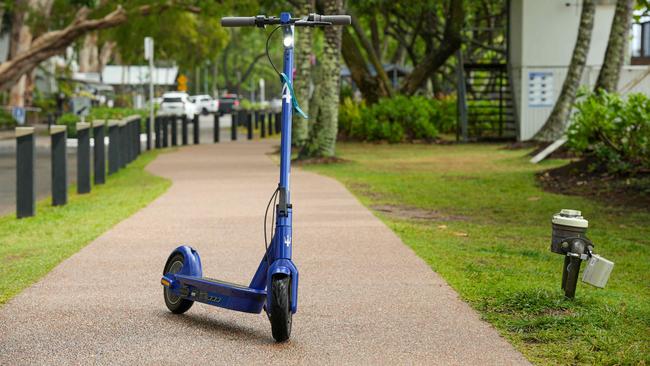E-scooter crashes spark new hospital trauma category
It has been revealed on average two people a day are brought into the Royal Brisbane and Women’s Hospital emergency department with injuries from an e-scooter crash.

QLD News
Don't miss out on the headlines from QLD News. Followed categories will be added to My News.
E-scooter crashes have become so prevalent in Queensland trauma doctors have had to create a new classification for them.
And one medical expert has warned that more infrastructure, education and policing needs to occur on the back of a State Government rebate scheme making e-scooters and e-bikes more financially accessible.
Two months into the state’s first e-scooter share scheme, a study conducted by emergency doctors found nearly one person a day had been brought into the Royal Brisbane and Women’s Hospital emergency department with injuries from a crash.
Dr Gary Mitchell, an emergency specialist from the RBWH and Jamieson Trauma Institute researcher, said that number had only increased over time.
“We’re up to two a day on average,” he said.
“Sometimes it’s more than that.
“We’ve also had to bring in new trauma criteria – so when patients have a car crash, if they meet a certain speed threshold or certain mechanism, they get into our trauma room versus a different area.
“We’ve had to bring in some e-scooter or EPMD (electric personal mobility device) trauma criteria because we are seeing such a high volume (and need to) make sure these patients are properly assessed and investigated by the emergency and trauma doctors.”
He raised concerns about a rebate scheme offering $500 towards the cost of an e-bike or $200 towards an e-scooter in an effort to reduce transport emissions.

“We just want some proper regulations and thought going into it … with infrastructure, roads (and) pathways so people can use them safely and store them safely,” Dr Mitchell said.
“Where’s the education on helmet use and speed?
“Are there police out there policing it in areas where we’ve shown them – the peak areas of the Valley and Howard Smith Wharves on a Friday and Saturday night. The Jamieson Trauma Institute has done a lot of research around that.”
He said while the severity of e-scooter crash injuries was often compared to those suffered by cyclists, Dr Mitchell said there were some differences.
He said they saw a peak in crashes during the evenings and on weekends – including people using the devices to get home from the pub – as well as crashes where the user was not wearing a helmet.
“We know it’s not going away. We know it’s growing,” Dr Mitchell said.
“(We see) speed, not wearing helmets, multiple people on them, alcohol – things like that are preventable risk factors.
“I’m aware of a handful that have died pre hospital and within our hospital after they’ve had their accident.
“The speed thing with private scooters is very concerning because some of these scooters go 60km/h, 70km/h.
“If you’re on the road, on a motorbike, you would need to have a licence to go at that speed, whereas (e-scooters) are allowed to go along public pathways and the edges of roads at those speeds without actually any formal training.
“It’s a recipe for disaster.”
A further analysis of electronic personal mobility device crashes was conducted in 2021 and showed more than 25 per cent of people brought into the RBWH emergency department were affected by alcohol and 10 per cent had not been wearing a helmet.
Twenty per cent were admitted and six per cent required surgery.


